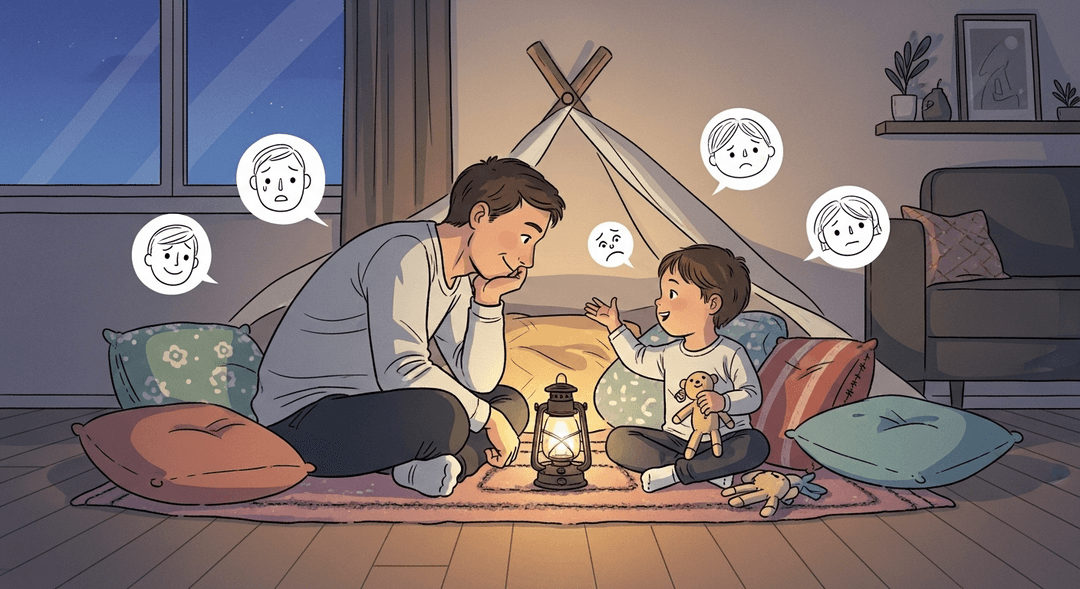Create a Safe Space for Sharing Feelings
Ever tried to get your kid to talk about their day and ended up with a suspiciously detailed account of what the class pet ate instead? Welcome to the ‘Feelings Fort,’ where you try to coax out emotions without accidentally launching an interrogation. If you’ve ever wondered how to get beyond ‘fine’ and ‘okay’ without bribing your child with snacks, this one’s for you. (Bonus: You might even learn what you’re feeling, too.)
Kids who feel safe to share their feelings develop better emotional regulation, stronger self-esteem, and improved problem-solving skills. For parents, it builds trust and connection, and yes, your own stress levels may drop when you realize you don’t have to be a mind reader. Neurologically, open communication helps wire kids’ brains for empathy and resilience—plus, it means fewer bottled-up outbursts at bedtime (score!).
How to do it
Set the scene by choosing a comfortable spot where you both can relax. Make sure to put your phone out of reach to avoid distractions—no doomscrolling during deep conversations.
Start by asking open-ended questions. Instead of yes/no questions like “Are you okay?”, try prompts such as “What was the best or worst part of your day?” This encourages a more meaningful exchange.
Listen with your whole face. Show you’re engaged by nodding, making eye contact, and resisting the urge to interrupt or immediately offer solutions.
Validate their feelings, no matter what they share. Simple responses like “That sounds tough” can be surprisingly powerful.
Share your own feelings from time to time. Modeling vulnerability is like handing them an emotional flashlight—it helps light the way for deeper connection.
Key tips:
- Choose a distraction-free, comfortable environment
- Use open-ended questions to invite conversation
- Practice active listening (nod, maintain eye contact, don’t interrupt)
- Offer validation and empathy
- Be willing to share your own emotions to encourage openness
